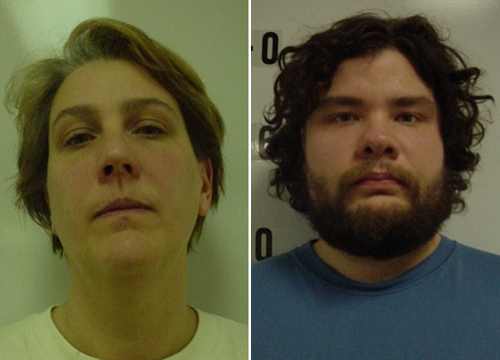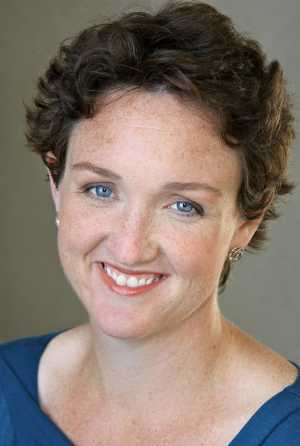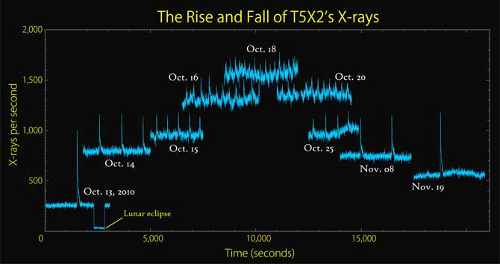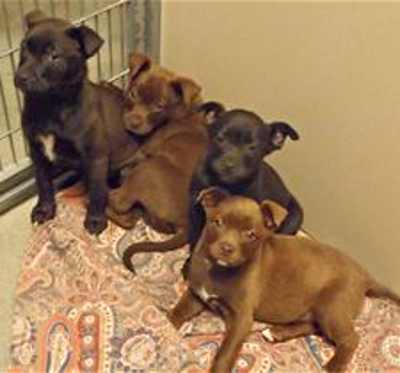KELSEYVILLE, Calif. – Launching a new program intended to “build capacity and effectiveness” of vineyard workers, the Lake County Winegrape Commission is sponsoring a series of training sessions for a select group of foremen and crew heads from Lake County vineyards.
The first group of “Master Vigneron Academy” participants is scheduled to meet once a month through August, then break for the harvest months of September and October before concluding the one year of coursework with a meeting in November.
Each session will cover one or more topics important to vineyard management and maintenance, including pruning, canopy management, vineyard layout, planting stock, equipment, health and safety of workers, conflict resolution, harvesting, winegrape quality and wine tasting.
The World English Dictionary defines the French word “vigneron” as “a person who grows grapes for winemaking.”
Wikipedia takes it a step further: “A vigneron is someone who cultivates a vineyard for winemaking. The word connotes or emphasizes the critical role that vineyard placement and maintenance has in the production of high-quality wine.”
The commission’s goal with its new project, the first of its kind in California, is two-fold: production of high quality wine and the development of some of the best vineyard workers to be found, according to Lake County Winegrape Commission President Shannon Gunier.
The commission will reward the individuals who successfully complete the academy with a “Master Vigneron” certificate.
“The end result is expected to be higher quality outputs in the vineyard with more efficient and skilled employees,” says Gunier. “Another key element is that better-trained workers will have greater confidence and develop into more valued employees. It is hoped that employers will recognize this, leading to better pay and enhanced advancement opportunities in the wine industry.”
The concept for the yearlong program was developed by the Commission’s Education Committee chair, Randy Krag of Beckstoffer Vineyards.
The commission has tapped its education director, Paul Zellman, to coordinate the program.
Zellman, who has 30 years of grape growing and winemaking experience, was selected to help the Commission accomplish the Master Vigneron Program goals.
The Ukiah viticulturalist will also assist with the continuing sustainable winegrape growing program, according to Gunier.
“We are excited to welcome Mr. Zellman to our team. His expertise will guide us through this brand new program,” said Gunier. “As it states in the mission statement for the Master Vigneron Academy, the commission directors believe ‘the vineyards are at the heart of producing world class wines and that experienced vineyard workers and foremen are the key to bring out the best of those vineyards.’ In developing this program, the commission directors sought to find the ideal teacher and coordinator. We have found a skilled, passionate and experienced individual in Paul.”
Zellman began his viticulture career as vineyard manager for MacGregor Vineyards, San Luis Obispo, in 1980, the same year he earned his bachelor of science degree in viticulture from the University of California, Davis.
He added a master of science degree in soil science from the University of California, Riverside, in 1995.
He has professional and personal ties to Lake County. “In 1998 I became the grower rep for Kendall-Jackson Winery for Lake, Mendocino and parts of Sonoma counties,” said Zellman. “At that time, Kendall-Jackson purchased about 60 percent of the total Lake County Sauvignon Blanc crop. During this period I met many Lake County growers and families.”
Zellman previously worked with the Lake County Winegrape Commission, from 2001 to 2003, directing a comprehensive wine quality assessment. He also developed maps and reports supporting the High Valley AVA application.
He is well-acquainted with Lake County, too, because of family. “I first become familiar with Lake County when visiting my wife’s family in Lakeport. My father-in-law is retired Superior Court Judge John Golden,” said Zellman. “My wife also has family in Ukiah where I now live and where we raised our two sons.”
Zellman has worked as a vineyard manager at San Pasqual Vineyards in Escondido, Calif., a grower relations representative with Kendall-Jackson in Santa Rosa, a cellar worker with Geyser Peak Winery in Geyserville, and an assistant winemaker with Brutocao Cellars in Hopland.
Speaking about anticipated outcomes of the Master Vigneron Program, Zellman said, “Growers will see crews that are supervised by graduates of the MV Program performing tasks correctly and at lower costs. Ultimately, wineries and wine drinkers will recognize these efforts by the production of better wines.
“Furthermore, as the word spreads of the professional training that we provide for our supervisors, Lake County will attract and retain more key vineyard supervisors. Also, other employees will see an opportunity to advance their own professional development and an enhanced livelihood.”
Meet the academy class
The first class of the Master Vigneron Program consists of 10 experienced Lake County vineyard workers.
They are Amador Duran of Obsidian Ridge Vineyards, Jaime Rosas of Lyon Vineyard, Gabriel Martinez and Felix Aguilar of Bella Vista Farming Co., Jeronimo Rico of Dorn Vineyards, Antonio Batres and Alonso Raygoza of Beckstoffer Vineyards, Tarciscio “Tacho” Corona of Stokes Vineyards, Federico Gonzalez of L & L Vineyards and Gerardo Mendoza of Red Hills Vineyard.
Amador Duran, Obsidian Ridge
Amador Duran is a vineyard foreman with Nissen Vineyard Services. He has worked on the Obsidian Ridge vineyard project since 1998.
His 15 years of vineyard experience, including many years on the Maxwell Ranch in Kelseyville, has given him the knowledge and skills to perform his current job as ranch foreman, he said.
He especially enjoys working with many people. Speaking about the range of tasks in his job, Duran said, “I love it.”
He looks forward to the Master Vigneron Academy courses, noting that he hopes to gain additional information about roots and plant stock.
Duran has lived in Lake County for more than 20 years and currently resides in the Clearlake area with his wife Alejadra.
The couple has four children: a son who is in college, a daughter in high school, a son in elementary school, and a 2-year-old daughter.
Jaime Rosas, Lyon Vineyard
Jaime Rosas is veteran of vineyard work in the Kelseyville area for more than 30 years.
Managing all operations of winegrape production for Walt Lyon’s Vineyard, Rosas came to Lake County in the mid-1970s and spent a few years working “here and there, like everybody else” until Walt Lyon offered him full-time employment.
Rosas had made the trek from Mexico in about 1974. His part-time experience included Lyon’s ranch.
It was around 1978 that Rosas was “fortunate” to be asked by Lyon to work for him. “Walt and I have a trust in each other. We understand each other,” said Rosas.
He joked, “(Walt) trusts me enough to mess things up,” adding that his employer allows him to try out ideas and sometimes they work out.
Rosas looks forward to the Master Vigneron Program, saying he is continuing to learn new things about winegrape production.
He lives near the Lakeport/Kelseyville border with his wife of 30-plus years, Marcia. The couple reared three boys who attended Kelseyville schools from kindergarten through graduation from high school.
Gabriel Martinez, Bella Vista Farming Co.
Gabriel Martinez currently manages all field operations on the five Bartolucci properties of the Bella Vista Farming Co.
He joined Bella Vista’s management team in 2009 following a two-year stint as supervisor at Bartolucci Vineyards.
His work experience includes employment with Syd Stokes over 14 years during which he worked his way up to foreman/supervisor.
Born in La Nopalera de Ecuandureo, Michoacan, Mexico in 1963, Martinez immigrated to the United States in 1981 and settled in the Finley/Kelseyville area.
He has worked in vineyards and pear orchards since. He is familiar with all cultural practices for both crops, having worked in pruning, picking, machinery operation, pesticide and fertilizer application, frost protection, irrigation and labor supervision.
In 1996, Martinez became a U.S. citizen.
He is married and has two sons, two daughters, and a granddaughter.
Felix Aguilar, Bella Vista Farming Co.
Felix Aguilar has worked for Bella Vista Farming Co. and/or Quercus Ranch since 1995.
Originally hired for his mechanical and fabrication skills, he was moved into a supervisory role because of his ability to plan work and manage people.
He oversees most vineyard and orchard activities for a number of Bella Vista’s clients, as well as repair and maintenance activities for much of the farm equipment used in those operations.
Aguilar owns property in Texas and Mexico where he grows Milo. He also enjoys buying, rebuilding and selling used cars and pickups.
Aguilar was born in Progreso del Campecino Rio Bravo, Tamaulipas, Mexico in 1952, and became a U.S. citizen in 1998.
He is married and has one daughter, four sons, and 14 grandchildren.
Jeronimo Rico, Dorn Vineyards
Jeronimo Rico has worked for Dorn Vineyards since the mid-1970s – “1974 or ’75,” he said – having previously been employed as a pear pruner in the Kelseyville area.
He is a supervisor for the Dorns, overseeing every aspect of the vineyard maintenance and winegrape production.
With his experience in all vineyard skills, Rico says he especially enjoys being a foreman and supervising other workers in the production process.
A resident of Kelseyville for nearly 40 years, Rico lives with his wife Adelina and daughter Esther.
Antonio Batres, Beckstoffer Vineyards
Antonio Batres has worked for Beckstoffer Vineyards for 11 years, mostly as vineyard supervisor but with experience in all vineyard skills.
He came to the company with a variety of experiences in California orchard crops.
Batres studied one year at CIANO (Centro de Investigaciones Agricolas del Noroeste) in Ciudad Obregon, Sonora, Mexico, research home of the “father of the green revolution” and Nobel laureate Norman Borlaug.
Batres and his wife live in Lakeport with their three children, ages 10 months to 16 years.
Alonso Raygoza, Beckstoffer Vineyards
Alonso Raygoza has worked for Beckstoffer Vineyards for over 12 years, learning vineyard skills from the ground up.
He is an experienced equipment operator extraordinaire. As harvest forklift operator, he loaded and unloaded most of the more than 2,200 valley bins that were dispatched from Beckstoffer’s operation last harvest.
Raygoza lives in Clearlake Riviera with his wife and 10-month-old daughter.
Tarciscio “Tacho” Corona, Stokes Vineyards
Tarciscio “Tacho” Corona is in his sixth year of employment with Stokes Vineyards. He has been picking grapes for Lake County growers for many more years, having been in the area for 14 years.
The 33-year-old is a foreman/supervisor who has shown his skills in working with people. He handles crews very well, according to his employer.
He is also a very good equipment driver and an excellent mechanic. Corona says his favorite vineyard activitiy is pruning.
He lives in Lakeport with his wife Apolonia (“Polly”) and three children ages 3 ½, 8 and 9.
Federico Gonzalez, L & L Vineyards
Federico Gonzalez is a vineyard foreman for L&L Vineyards where he has worked for 13 years. His duties are extensive and involve every aspect of the winegrape growing process.
As foreman, he is responsible for crew training and supervision. He drives tractors for spraying, discing and other maintenance, and actively oversees L&L’s irrigation and harvesting tasks.
Originally from the state of Michoacán, Gonzalez lives in Lakeport with his wife Gloria.
The couple’s children, three daughters and a son, range in age from 6 years to 20 years old.
Gerardo Mendoza, Red Hills Vineyard
Bringing experience from three years of work in Santa Rosa for vineyard owner Bob Mount, Gerardo Mendoza is new to vineyard work.
He began working at Mount’s Lake County vineyard this year. As a rookie to winegrape growing, Mendoza is charged with learning everything there is to know about the process. He says he is dedicating the next years of his life to doing so.
Mendoza moved from Santa Rosa to make a new home in the Red Hills region of Lake County. He and his wife Maria del Rosario have a son and a daughter, ages 5 and 2 years old.
Course outline
The first class of Master Vigneron Academy was introduced in November at the Winegrape Commission’s 10th Annual Sustainable Winegrape Growing Seminar at Ceago Vinegarden.
The first “official” class meeting of the group followed in January when the participants attended the 2012 Unified Wine & Grape Symposium in Sacramento.
One of the highlights of this year’s trade show was the Spanish language seminar sessions.
Several coursework hours will take place in the Finley Grange hall and in Lake County vineyards, according to the Academy outline.
“Participants will also have the opportunity to learn about the broader wine industry itself. (They) will engage in wine education with the chance to taste the ‘finished product’ and make connections between their critical work in the vineyard and how that results in what ends up in the bottle,” said Gunier.
The Master Vigneron students are scheduled to visit Guillaume Nursery and University of California at Davis vineyards during one of the in-field course days in March and will take another trip in June to a Sonoma County winegrape grower’s operation in Healdsburg.
In a welcome letter to participants, Zellman told the group the areas to be covered in the course include vineyard cultural practices, vineyard development, nursery stock, winegrape varietals, and labor management.
“This is a hands-on course consisting of vineyard tours, classroom activities and seminar sessions. Practical labor management skills will be honed through specially arranged training assignments with role playing as a key component of the process,” he said.
The Master Vigneron Academy graduates will be able to use the knowledge they gain to enhance their work as “leaders, mentors and mediators” in their vineyard careers, said Zellman. The participants will get a glimpse of the entire California winegrape industry, he added.
Zellman said he looks forward to working with each of the students selected for the program. The course, as it progresses, will provide opportunities for the experienced group to expand their interactions with Lake County and Northern California winegrape producers, he noted.
Established in 1991 by the winegrape growers of Lake County, the Lake County Winegrape Commission is a local marketing order.
Its primary function is to provide marketing, education, and research programs to Lake County winegrape growers.
For more information about upcoming events and workshops, check the commission’s Web site, www.lakecountywinegrape.org , or call the commission office at 707-995-3421.
For information about the seminar or the Master Vigneron Program, email Zellman at This email address is being protected from spambots. You need JavaScript enabled to view it. .





 How to resolve AdBlock issue?
How to resolve AdBlock issue? 


























